TEXT AND PHOTOGRAPHS BY SUMAIYA MUSTAFA
Kayalpatnam, Tamil Nadu
Palagai or Palavai, like it is called colloquially, is a wooden plank which was used as a reading and writing material for Arabic language in the provincial town of Kayalpatnam, Tamil Nadu. It was used actively until the turn of the 21st century by the Palli-going kids in the town. Palli translates to ‘school’ and ‘mosques’ in Tamil. But in Kayalpatnam it has also got another meaning. A Palli is a private residence or a public place where reading classes in Arabic are given to young kids as small as three year olds. My grandmum, who is an in-house archivist thanks to her ambition guarded by diligence, has retained three such Palagais from the past. Each of them belongs to my two uncles and my mother who grew up in the mid 60s and early 70s respectively. My mum’s straightaway came to me when I began my first reading classes in the later half of the 90s as a 3 year old. They are as sturdy as they were in their heydays. This one is 48 x 28 centimetres. It’s surface is smooth and shiny, like a layer of talcum powder was freshly rubbed on it.
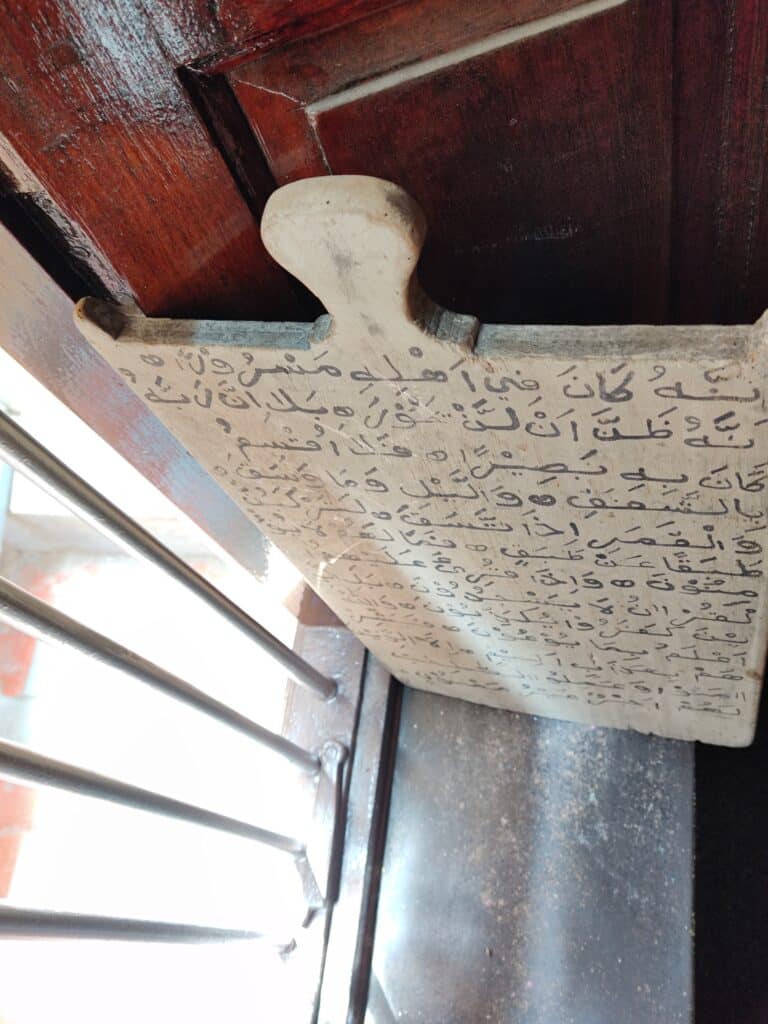
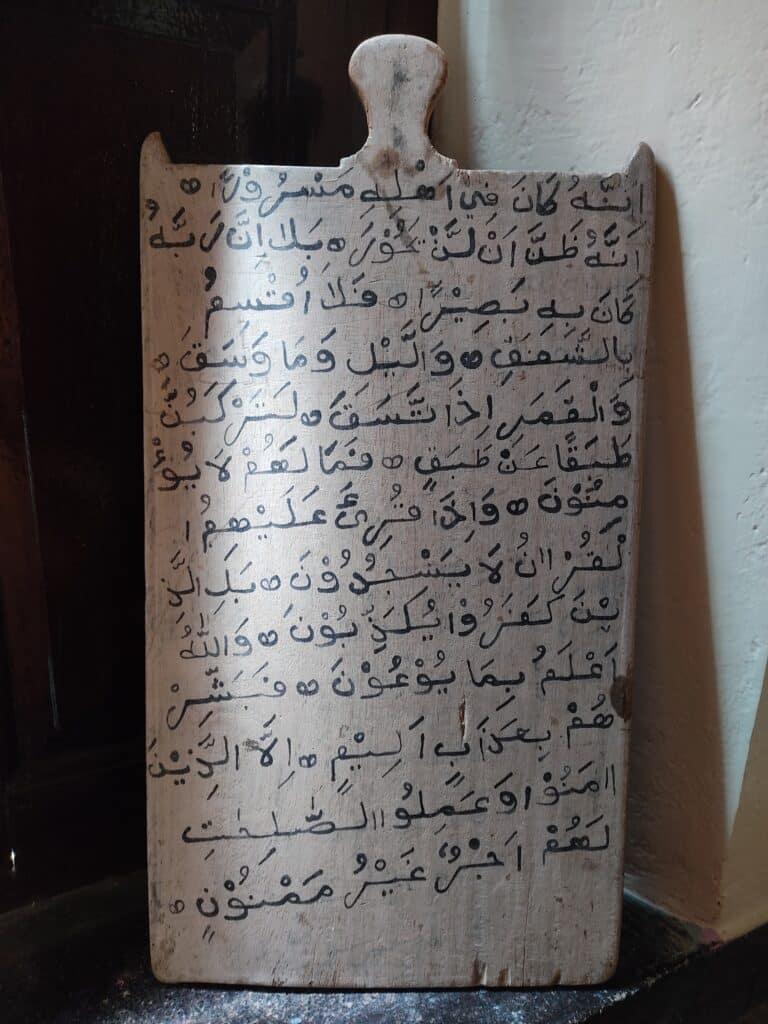
It was a common sight in the mornings and evenings of our coastal town, until the early 2000s, to see children walking, running, and hopping to their neighbourhood Pallis – boys with their cutely clad Sarong, and Topi and girls with a scarves on top of their heads knotted between their lower chin and neck. It’s a scene etched in the air of the town. The neck-like holding on the top of a Palagai helps the children hold it with a grip. Most of us in town begin with our Arabic reading before our introduction to English alphabets in school. I was first sent to the same neighbourhood Palli and the same Leppe that taught my mum. Leppe is a corruption of the word Lebbai. Lebbai roughly refers to a scholar of Islam in the Tamil-speaking Muslim circles of coastal Tamil Nadu and Kerala. It is the Leppe who deems it on himself or herself to write, erase, and rewrite on a Palagai.
Writing on a Palagai is a bi-monthly ritual that Leppes involve in. The Leppe from whom my mum learnt is a woman. Women leppes often conduct classes at their Thinnais. Thinnai is the front part of the Dravidian households where guests, trespassers are entertained. Womenfolk themselves exchange banters sitting at their Thinnai. So, when one’s Palli is a private residence with a woman Leppe, one sits in a long queue of boys and girls at the Leppe’s Thinnai sitting the Palagai on their laps. Reading of Arabic is important in Muslim households because it’s the first step to understand the teachings of Quran. Like any other language, it begins with learning alphabets, vowels, words, and then long sentences. Until a child becomes equipped to read sentences Palagais are used. My mum says that when a child stops using Palagai and begins with the paperback Quran it is considered no lesser than an undergraduation at that time and place.
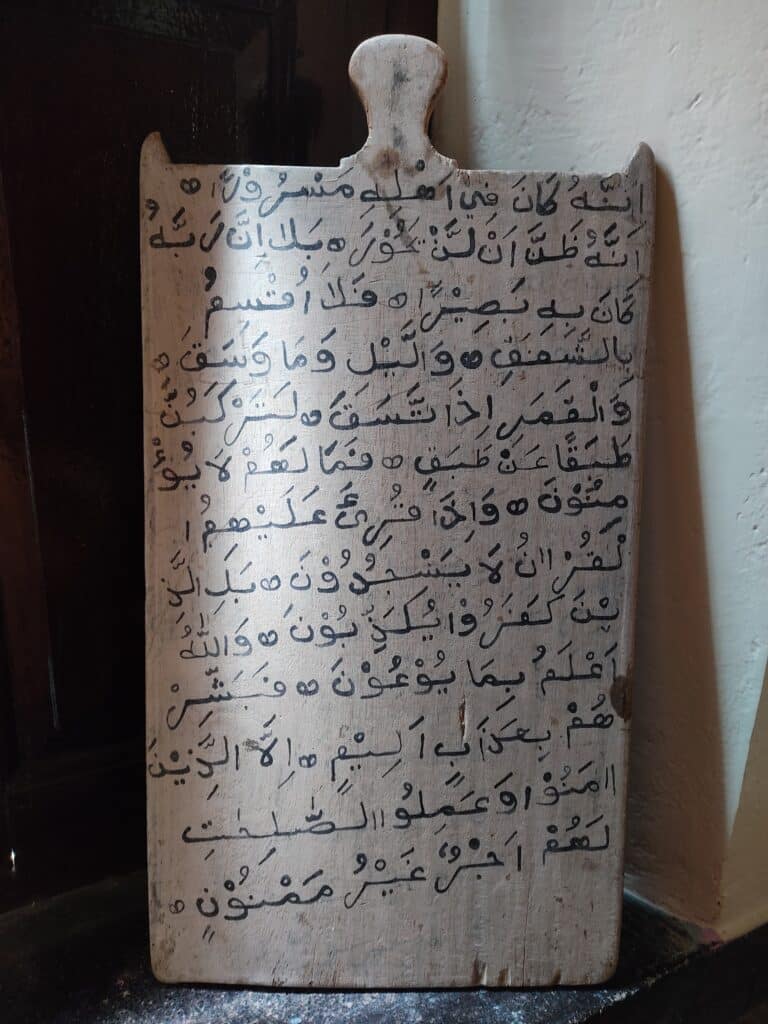
My mum fondly, with some false rage, often recalls how at the end of Wednesdays, Leppe would do a customary whip to every child in the Palli. This was done to remind the children to bring the weekly gig on Friday without fail interleaving Thursday which is always a holiday by local custom. Though Leppes were paid monthly, this weekly gig was paid to support the poverty of Leppes and there was no constraint or fixed amount on this. A child’s Palagai is due for erasing and rewriting only when they are able to read the already written text on the Palagai effortlessly like a fast moving train. This happens once in two weeks for a child. If a child isn’t able to do so at the end of two weeks, the portion goes on a redo and so the Palagai wouldn’t be rewritten. It’s viewed shameful when one’s peers’ Palagais go on for rewriting while one’s own isn’t.
The ritualistic writing of Palagai happens twice in a month. On this day, the Palli Thinnai looks like a modern-day activity day in schools. Kids are made to collect the fallen green neem pods from the neem trees in the neighbourhood which Leppe later used to write. While kids do that, Leppe squat-sat and erased the Palagais one after the other using a material called “Mala”. Mala is otherwise called Namakatti. It is the same material used by the Brahmins to draw those religious marks of three lines on their foreheads and body. Back in the day, it was collected from the banks of water bodies – like from the ponds in the village. However, I am no expert in the geological causes that result in that sedimentation of the material. Leppe in her free time after her chores sat down to write on a Palagai with a Kalam and black dye. Kalam is a wooden stylus which Leppe made out of Bamboo sticks. One end was sharpened to make it pointed to write. With the collected neem pods given by kids, Leppe with her very craft separated the gum out of it, mixed with the black dye and set on to writing. Neem gum was used because the dye wouldn’t stick on the wooden plank without it.
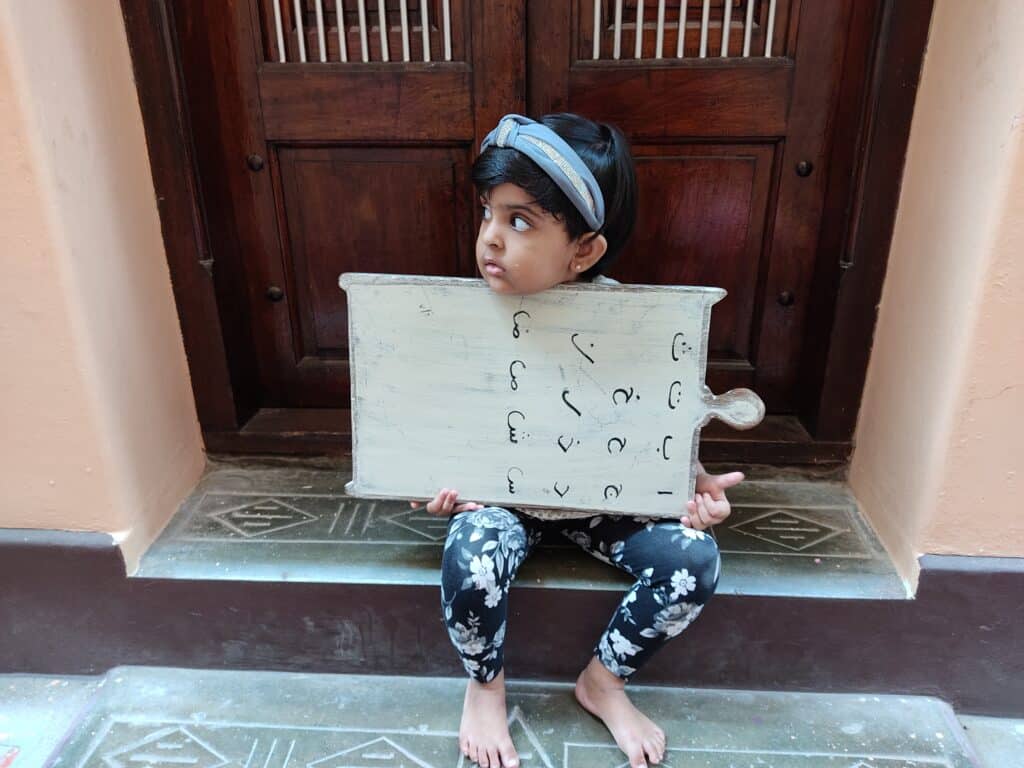
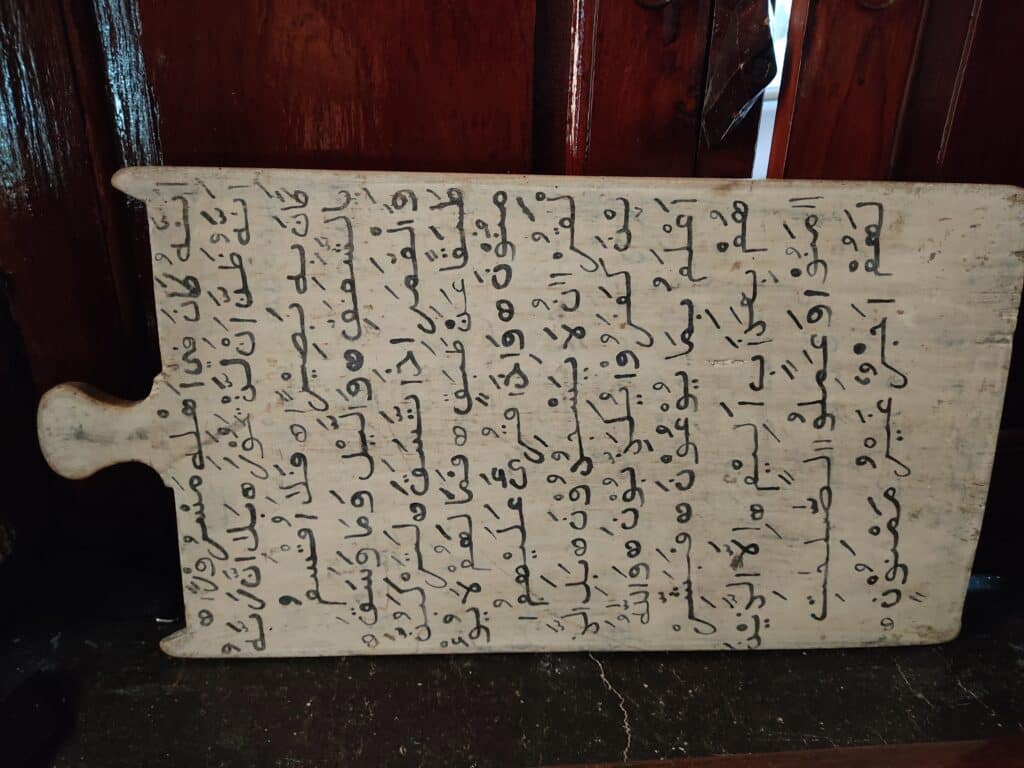
When I tried to understand the roots of this unique object that was once a commonplace in every household in the community, I found this. This has its roots in Egypt and Horn of Africa region where it is still used to this day in some parts. Our History of Kayalpatnam itself is placed at the crossroads of Indian Ocean trade, maritime silk route, itinerant merchants’ settlements, and the advent of Islam in the Indian subcontinent through waters. Unlike the northern part of the country, the south Indian states of Tamil Nadu and Kerala brag a relatively amicable entry of Islam through trade and friendly land grants by local rulers. From time immemorial, Kerala and Tamilakam had been in constant touch with the global realities through trade. It was from the 7th century A.D our port of Kayalpatnam like many other oodles of trading posts of Arabs from the Red sea region saw these itinerant traders settling down and marrying local women. Hence born the demography of Tamil-speaking Muslims of coastal Tamil Nadu we see today. It was this syncretism that guarded both the ideals of these traders and the local women. Religious inclination came from the paternal side and the everyday cultural habits came from the maternal side.
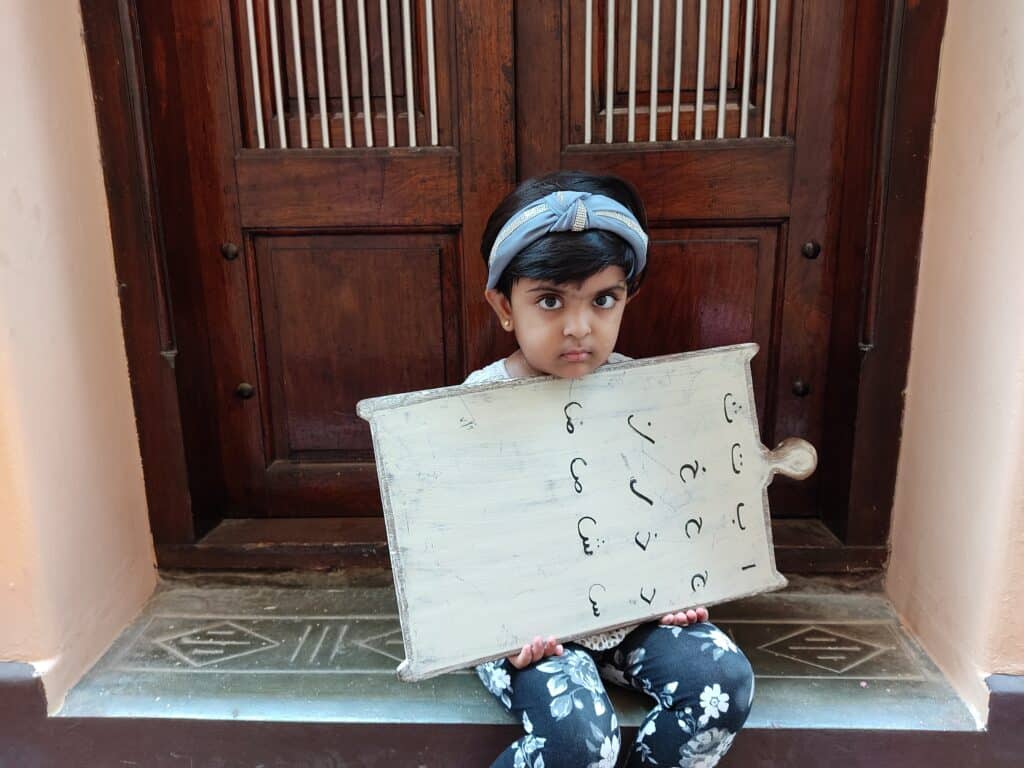
It’s simply fascinating to think that for over 1200 years, the tradition hasn’t died out. I am aware I use “hasn’t”. I don’t want to see it dying a natural death. The Palagai you see in the photos is not less than 65 years old. It originally belonged to my maternal uncle who is over 68 now. It was then passed on to my mum, then me and now my daughter. There are other Palagais in the house that are older than my 83 year old grandmother. My daughter is three years old now and my mum has already begun the Arabic reading sessions for her at home. We took out my mum’s Palagai that was passed on to me, rubbed it with a “Mala” or “Namakatti”, and wrote it using the bamboo Kalam. Both bought from Amazon India.
